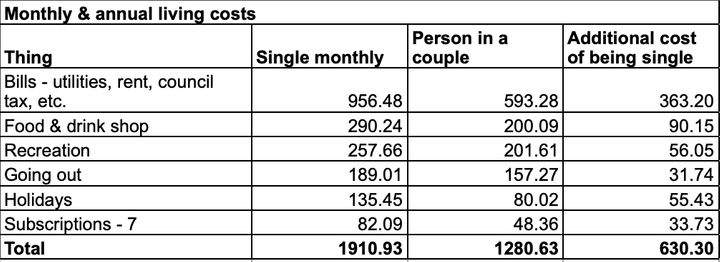
Energy regulator Ofgem has confirmed a major policy change today which could impact your bills, yet again.
Now the price cap will be updated quarterly (every three months) instead of every six months, in a bid to prevent large-scale disruption.
Advertisement
The cap was set out in law in 2018, and reflects the maximum suppliers can charge consumers per unit of energy.
It means suppliers can only take 1.9% as profit, but it’s not a cap on the maximum bill a household can be charged, as this is based on their usage.
While it may seem like an insignificant change in policy, it will have a substantial impact on your bills. Here’s what you need to know.
How important is the price cap?
Ofgem made headlines when it raised the price cap in April, meaning every household had to pay more for their annual energy bills.
Advertisement
The average household had to then start paying £700 more for their yearly annual bills, raising them to a record £1,971 (it was previously £1,227).
For many, this is seen as the start of the cost of living crisis.
While the cap stops prices rising and falling dramatically for consumers as wholesale prices go up, it does mean the cost of living is likely to only get harder in the short-term.
However, when wholesale prices fall, the reductions will be passed on the customers as Ofgem should lower the price cap. This will happen more quickly with the quarterly price cap.
The cap was set to rise again come October (to a staggering £3,358 a year according to analysts Cornwall Insight) but this policy change from Ofgem means the next price cap level will be published at the end of August.
Advertisement
Why has this changed?
Ofgem say this change prevents the cost of both gas and electricity lagging behind changes in the market, but admits the market is currently “volatile” so the price cap methodology is to be kept under review.
Advertisement
Ofgem CEO Jonathan Brearley acknowledged that “this situation is deeply worrying for many people”.
He then blamed Moscow’s decision to squeeze its gas supply to mainland Europe, which has a knock-on effect for the UK.
“As a result of Russia’s actions, the volatility in the energy markets we experienced last winter has lasted much longer, with much higher prices than ever before,” he said.
“And that means the cost of supplying electricity and gas to homes has increased considerably.
“The trade-offs we need to make on behalf of consumers are extremely difficult and there are simply no easy answers right now.”
He said this change means consumers will pay the “real cost of the energy”, but added: “We will keep working closely with the government, consumer groups and with energy companies on what further support can be provided to help with these higher prices.”
Why has the change been heavily criticised?
Back in May, MoneySavingExpert Martin Lewis laid into Ofgem’s early proposals to review the price cap every three months, rather than every six.
Advertisement
Explaining how he had lashed out at the regulator over the suggestions in a Twitter thread, he said the changes were “a fucking disgrace that sells consumers down the river”.
He apologised for his outburst, explaining: “I should’ve behaved better. My ire’s institutional not individual, it was inappropriate.”
However, Lewis claimed the changes would bring “dire consequences for consumers”.
Cornwall Insight also predicts that the energy price cap will go up to £3,615 in January. For comparison, it was £1,400 a year in October 2021.
MPs already called on the government at the end of July to take urgent action to help households amid warnings that prices will soar this autumn.
“Once again, the energy crisis is racing ahead of the government,” said Darren Jones, the chair of the business, energy and industrial strategy committee.
“To prevent millions from dropping into unmanageable debt it’s imperative that the support package is updated and implemented before October, when the squeeze will become a full-on throttling of household finances and further tip the economy towards recession.”
With this new policy change confirmed and the new price cap looming at the end of August, this threat of “unmanageable debt” is likely to only creep closer.





























